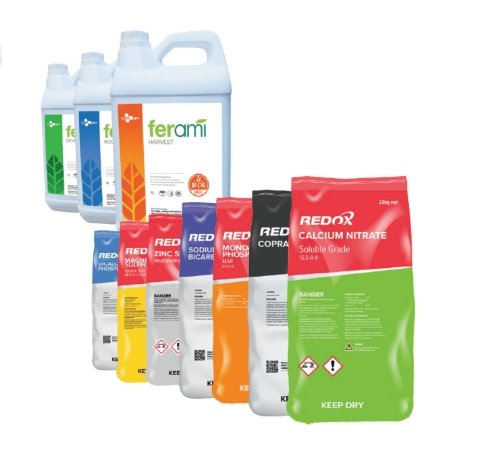By CINDY BENJAMIN
Some weeds have thrived in minimum-tillage farming systems, and resistance to mainstay herbicides is a considerable threat to profitability.
Dr Michael Widderick, principal research scientist (weeds) from the Queensland Department of Agriculture and Fisheries, said the latest national herbicide resistance survey uncovered increasing resistance to glyphosate, paraquat and 2,4-D in key weed species across the region.
“The results are now in from resistance testing of weeds collected from 878 paddocks across Queensland and NSW in the 2020 national weed survey,” Dr Widderick said.
“Of particular concern are the results from testing the 387 sowthistle samples, where 5 per cent were resistant to 2,4-D, and another 32 per cent were developing resistance.”
The survey team collected the sowthistle samples from paddocks in the region during both winter and summer cropping seasons. Sowthistle is one of the northern grain region’s most common and widespread weeds, estimated to be present across over half a million hectares in the region.
Along with growing resistance to 2,4-D in sowthistle, there is increasing resistance to paraquat in tall fleabane and high incidence of glyphosate resistance in key summer grass species and flaxleaf fleabane in the northern cropping region.
“The loss of key herbicides would severely limit growers’ control options and potentially cause significant yield losses,” Dr Widderick said.
“We encourage growers to use the WeedSmart Big 6 strategy to take a more diverse approach to managing problematic weeds and to keep weed numbers low,” he says.
The WeedSmart Big 6 strategy embraces herbicide and non-herbicide weed control tactics to keep weed numbers low in cropping systems.
The latest weed control tactics and technologies will feature at WeedSmart Week in Port Lincoln in South Australia on July 29 and 30.
What are the implications of increasing resistance to glyphosate, particularly in grass weeds?
Results of the 2020 survey indicate glyphosate can no longer be considered an effective knockdown herbicide for four important weeds in the northern region.

The four key weed species collected and found to be resistant to glyphosate were awnless barnyard grass (Echinochloa colona) (49 per cent of populations), feathertop Rhodes grass (Chloris virgata) (99 per cent), flaxleaf fleabane (Conyza bonariensis) (100 per cent) and sweet summer grass (Brachiaria eruciformis) (58 per cent).
A population is considered resistant if more than 19 per cent of the plants survived the upper label application rate of the herbicide.
Sweet summer grass is a key weed in Central Queensland, where glyphosate resistance was first detected 2013.
The flip side of herbicide resistance testing is identifying ‘what still works’.
Testing of the survey samples showed that Group 1 herbicides are an effective alternative to glyphosate for the knockdown control of these summer grass weeds. However, there is a high risk of resistance selection for Group 1 herbicides, and any survivors need to be prevented from setting seed.
All three summer grass species resistant to glyphosate were still fully controlled with haloxyfop; clethodim remains effective on awnless barnyard grass; and paraquat + diquat and 2,4-D are effective on flaxleaf fleabane.
This illustrates the importance of herbicide resistance testing to identify what herbicides are still effective against the weed population in a particular paddock or area. Using effective herbicides and removing any survivor weeds is a high priority, as is carefully considering the double-knock components used in fallow situations.
These grasses share several characteristics, including high seed production, low dormancy, and susceptibility to competitive environments. Some, such as feathertop Rhodes grass, are potential candidates for harvest weed seed control in short-season crops such as mungbean.
How should I deal with 2,4-D resistant sowthistle?
Populations of common sowthistle with resistance, or developing resistance, to 2,4-D were found throughout the survey area (in 37 per cent of samples) – from central Queensland to the Victorian/NSW border.
This is the first time that 2,4-D (Group 4) resistance has been observed in sowthistle (or wild radish) samples from random surveys in the northern region.
However, resistance to 2,4-D has been identified in these species sampled in the southern and western grains regions, so it is not a surprise to find resistance in northern farming systems.
Sowthistle produces a large quantity of tiny, wind-dispersed seed. The seed has a high germination rate (low dormancy), usually in response to rainfall. The seed remains viable at or near the soil surface for about 12 months (longer if buried).
Crop competition is very effective at suppressing sowthistle germination.
Barley (sown at 25 cm or 50 cm) or wheat (sown at 25 cm) can all but eliminate sowthistle germination.
A competitive faba bean crop can also suppress sowthistle seed production while increasing grain yield.
Is 2,4-D resistant wild radish an emerging threat in the northern region?
Wild radish is the most important broadleaf weed in broadacre cropping systems nationally, but it is not a common weed in the northern region.
Of the 24 populations collected from the northern grains region, 8 per cent (2 populations) were identified as resistant, and a further 33 per cent (8 populations) were developing resistance.
2,4-D resistance in wild radish is widespread in the western grains region, and this is where this weed has its main impact on the grains industry.
Wild radish seed is very persistent in the soil, so it is worth making every effort to keep this weed at very low numbers.
The latest weed control tactics and technologies will feature at WeedSmart Week in Port Lincoln in South Australia on July 29 and 30.




